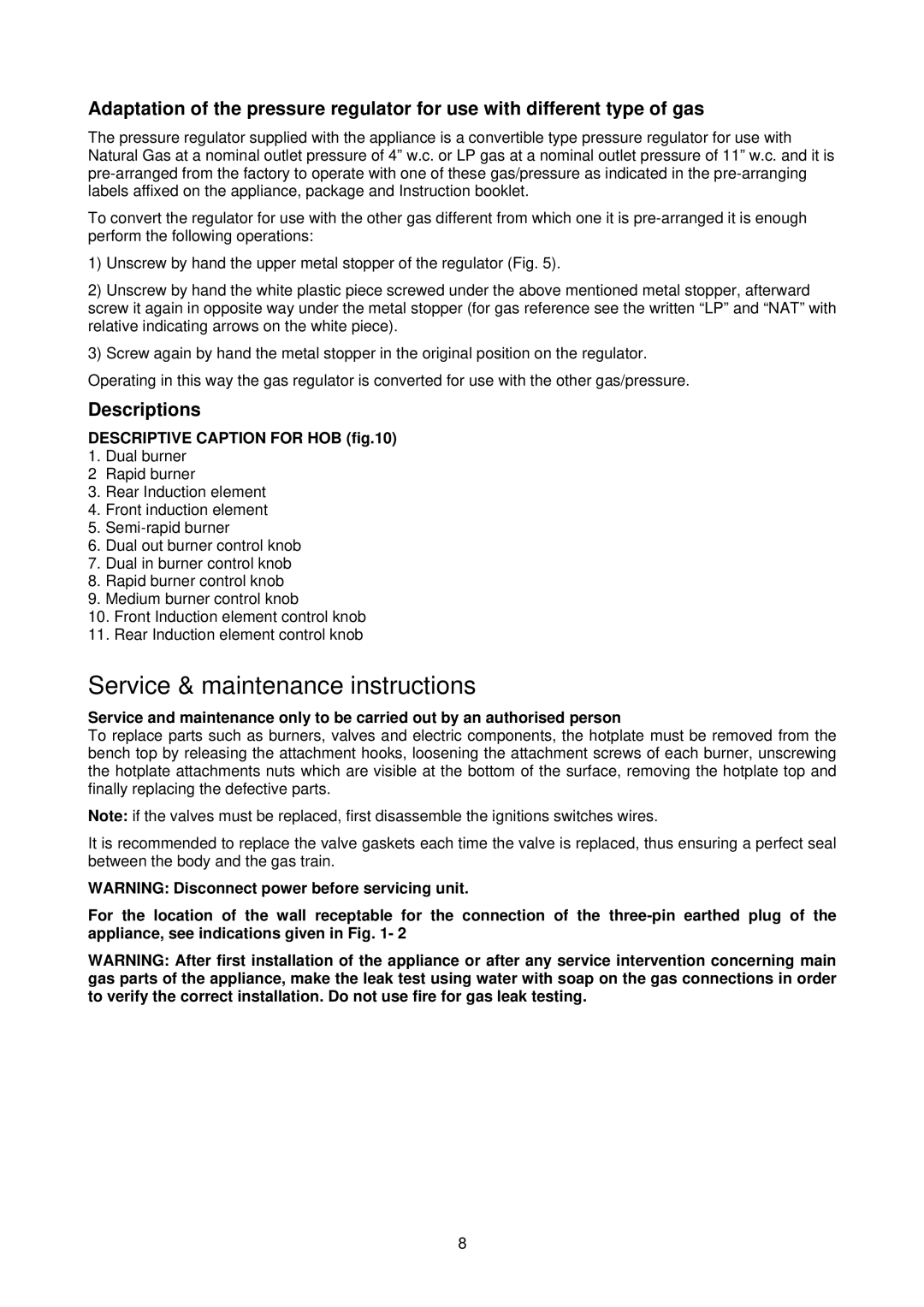Adaptation of the pressure regulator for use with different type of gas
The pressure regulator supplied with the appliance is a convertible type pressure regulator for use with Natural Gas at a nominal outlet pressure of 4” w.c. or LP gas at a nominal outlet pressure of 11” w.c. and it is
To convert the regulator for use with the other gas different from which one it is
1)Unscrew by hand the upper metal stopper of the regulator (Fig. 5).
2)Unscrew by hand the white plastic piece screwed under the above mentioned metal stopper, afterward screw it again in opposite way under the metal stopper (for gas reference see the written “LP” and “NAT” with relative indicating arrows on the white piece).
3)Screw again by hand the metal stopper in the original position on the regulator.
Operating in this way the gas regulator is converted for use with the other gas/pressure.
Descriptions
DESCRIPTIVE CAPTION FOR HOB (fig.10)
1.Dual burner
2Rapid burner
3.Rear Induction element
4.Front induction element
5.
6.Dual out burner control knob
7.Dual in burner control knob
8.Rapid burner control knob
9.Medium burner control knob
10.Front Induction element control knob
11.Rear Induction element control knob
Service & maintenance instructions
Service and maintenance only to be carried out by an authorised person
To replace parts such as burners, valves and electric components, the hotplate must be removed from the bench top by releasing the attachment hooks, loosening the attachment screws of each burner, unscrewing the hotplate attachments nuts which are visible at the bottom of the surface, removing the hotplate top and finally replacing the defective parts.
Note: if the valves must be replaced, first disassemble the ignitions switches wires.
It is recommended to replace the valve gaskets each time the valve is replaced, thus ensuring a perfect seal between the body and the gas train.
WARNING: Disconnect power before servicing unit.
For the location of the wall receptable for the connection of the
WARNING: After first installation of the appliance or after any service intervention concerning main gas parts of the appliance, make the leak test using water with soap on the gas connections in order to verify the correct installation. Do not use fire for gas leak testing.
8
